What does the operator monitor hide from the client?
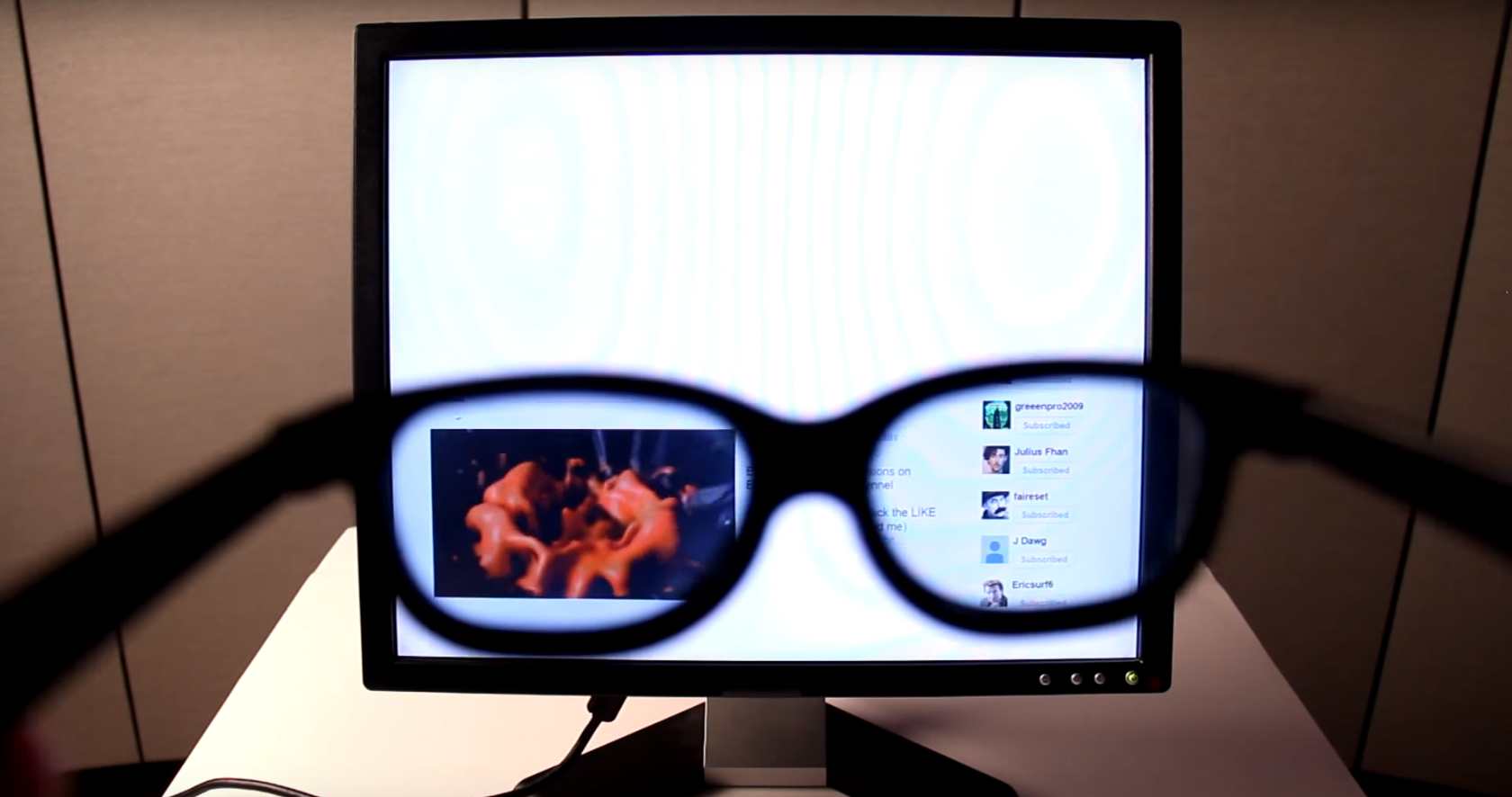
Smart gadgets — smartphones, tablets — and the increasing availability of digital technology spoiled us, the users. Now it seems that for solving any issue there must be its own interface - of course, intuitive, touch-friendly and accessible on any device.
Modern telecom operators provide their customers with extensive self-service through portals, mobile applications and on tablets at points of sale:
')
- adding and changing services;
- tariff setting and service configuration;
- statistics and usage details;
- financial monitoring;
- work with bonuses;
- payment for services
and many others.
At the same time, consultants in the store or call center operators, performing similar operations, work in other systems and interfaces.
Why build and maintain multiple systems? Is it possible to unify these interfaces? And what is hidden from the client?
Self-service interface
Let's look at a few examples of the self-service interface that are easy to find by the search engine for the query “Personal account of the telecom operator”.


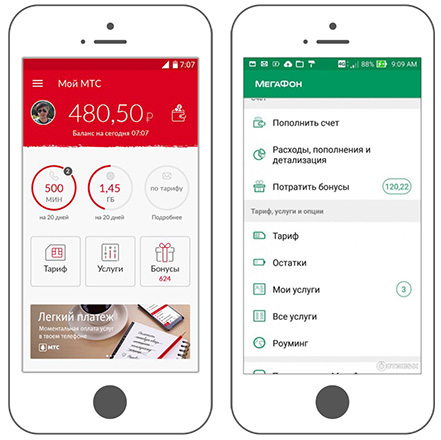
They look, of course, in different ways, but the common features are clearly visible:
- start screens show key information (tariff, current balance, bonus points);
- the details and functions are “hidden” in other sections or under buttons;
- the design is as simple as possible so that the client can figure it out on their own;
- There is advertising and special offers.
Workplace employee customer service
And this is the interface for the call center operator, developed by Netcracker. In the development process, we based our detailed research on the daily work of Tier 1 category operators around the world.
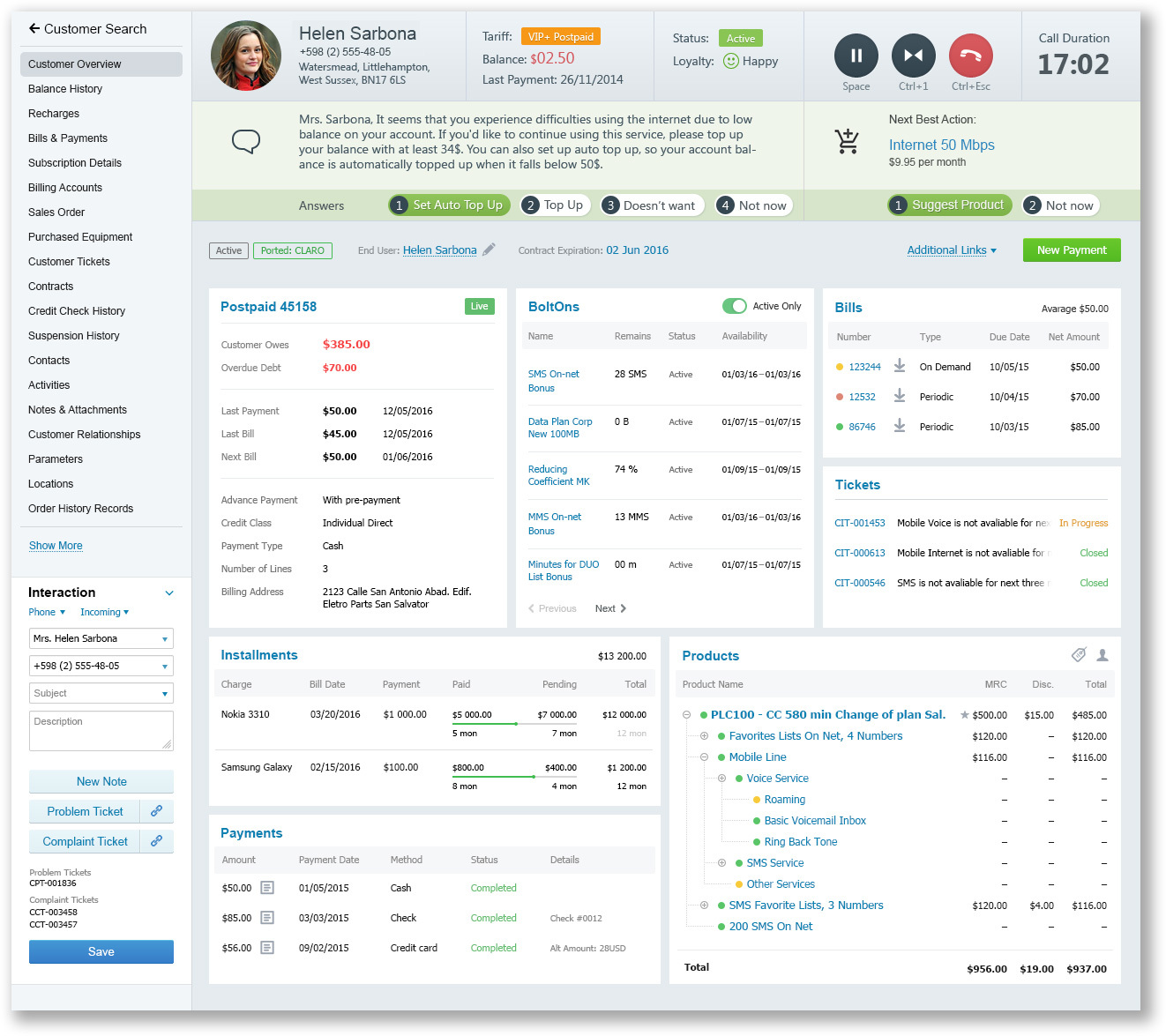
The interface for the call center operator, developed by Netcracker.
In our understanding, the professional interface should be based on the tasks of the employee and focus on improving KPIs. In this case:
- Average handle time
- After call work
- First call resolution
- Learning curve, etc.
During the micro-design of UX, we wanted to speed up the execution of top scenarios as much as possible. Therefore, among our priorities were the following tasks:
- Determine the importance of data and frequency of access to them. This affected the sequence and location of the widgets.
- Providing dynamic data composition depending on the context of the conversation. Widgets that correspond to the current scenario are raised up.
- Application of actionable analytics approach. Of the entire set of data, we focus on what is related to the context of the client’s request.
Obviously, such a tool requires the training and education of employees. Note:
- On the start screen, the data density is much higher. The operator sees finances, connected services, non-monetary balances, the history of recent downloads.
- Many parameters and controls do not have signatures, there are abbreviations, color coding is applied.
- Tips and background information are few. Most of the operator knows by heart.
In addition, the operator is available that the client does not see:
- Scripting - a sequence of questions that the operator must ask the client. It depends on the script and often changes.
- Statuses of products, services, billing objects and processing. In the personal account, the client sees only a small part of this.
- Customer loyalty indicators , including those from social networks.
- Up-sell / Cross-sell - analysis of what the client has already bought in order to sell him additional products and services.
- Next best action is a complex and volumetric analytics of client behavior. She analyzes what the client has addressed and predicts what can make him happier.
- Interaction Log - here record interaction with the client. Describe problems and their solutions, create applications in the back end, categorize requests for further analysis of statistics.
Differences in user and operator systems are due to two reasons:
- Different system requirements
The operator and the client have different skills and scenarios of interaction with the system. For the client, intuitiveness (the ability to quickly understand the interface) and satisfaction (the impression of the system as a whole) are important. For operators, the main thing is performance and speed, i.e. the ability to process the appeal as quickly as possible so that the client is satisfied. - Different goals
The client has no need to remember when and why he entered his personal account. The purpose of the client is to find out about the services. The goal of the company is to sell more. The company collects and systematizes appeals to predict what else can be offered to the client. In addition, the company cares about how to increase customer loyalty. This directly affects whether the client will continue to use the services.
Tomorrow - a single interface

All telecom operators (and not only telecom-) seek to reduce the cost of customer service - one of the most significant items of expenditure. As a result, operators are looking for new approaches to the process of interaction with subscribers:
- Clients value convenience and time; therefore, digital communication channels are developing: social networks, online consultants, etc.
- Self-service portals are becoming more convenient and functional, so that customers can manage their services independently.
- Due to the high turnover and the lack of qualified specialists in call centers, companies often turn to outsourcing. Therefore, the interfaces become more simple and understandable.
- Increasingly, the client and the consultant simultaneously look at one screen. If they select a product from a tablet in a store, then during a call to the call center, the operator connects to the client’s session and acquires and configures services on his behalf. Thus, a customer service representative teaches the subscriber each time so that the next time the subscriber can do it himself, without the help of a representative. This, of course, increases the processing time of the call, but at the same time solves the strategic task - to bring the service to self-service.
As a result, self-service gives customers more and more information and opportunities, and the operator interface is simplified. In fact, the interfaces are moving towards each other.
Project SelfService +
SelfService +, a joint project of our company and a large telecom operator in North America with a subscriber base of several tens of millions of subscribers, will serve as a good example of such a rapprochement.
The essence of the project
In new areas build houses. Mostly these houses are bought by young people and middle-aged people. When settling into an apartment, the owner discovers the box that the telecom operator has installed. The box provides modern telecom services: Internet, TV, telephony, international calls, etc. The owner visits the site, selects services, sets up, pays for, and immediately starts using them.
Customer interaction with the operator begins in digital format. This implies that the client will continue to serve themselves independently, reducing the company's costs for customer care to a minimum. The North American operator plans to “roll in” processes and systems on a new audience and gradually transfer its entire subscriber base to such a format.
How does a call center operator work in such a model?
In this project, a separate special system like the one we described is not created for call center operators. Operators work in the same self-service interface as clients. This is possible even within the same session with the client. But the question arises: how can the operator get access to special functions of the system - additional information about the client, logging the reason for the call, scripting questions that need to be asked, next best action?
For this, the self-service interface is enriched with special operator functions. They are added on top of what the client sees.
Consider an example. Here is one of the purchase steps through the eyes of the client (the operator’s name and corporate styles have been changed to fictional ones).
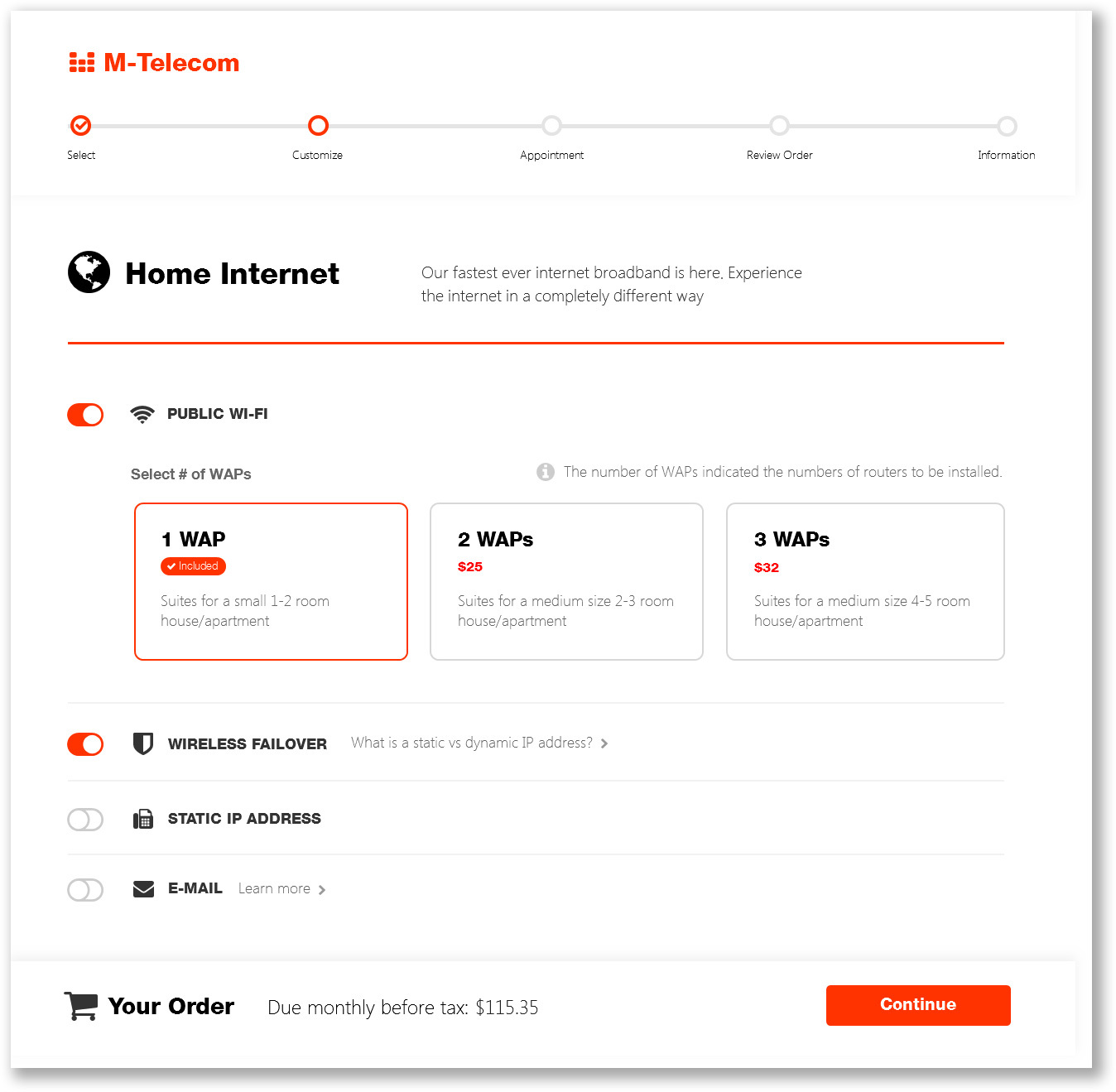
Order page telecom services for the buyer.
The client chose the tariff, which included Internet and mobile communications, and proceeded to clarify the options. At that moment, he wondered how many wireless access points to install in his apartment, and decided to call the call center. The call center operator connects to the client screen. However, the operator sees more than the buyer:
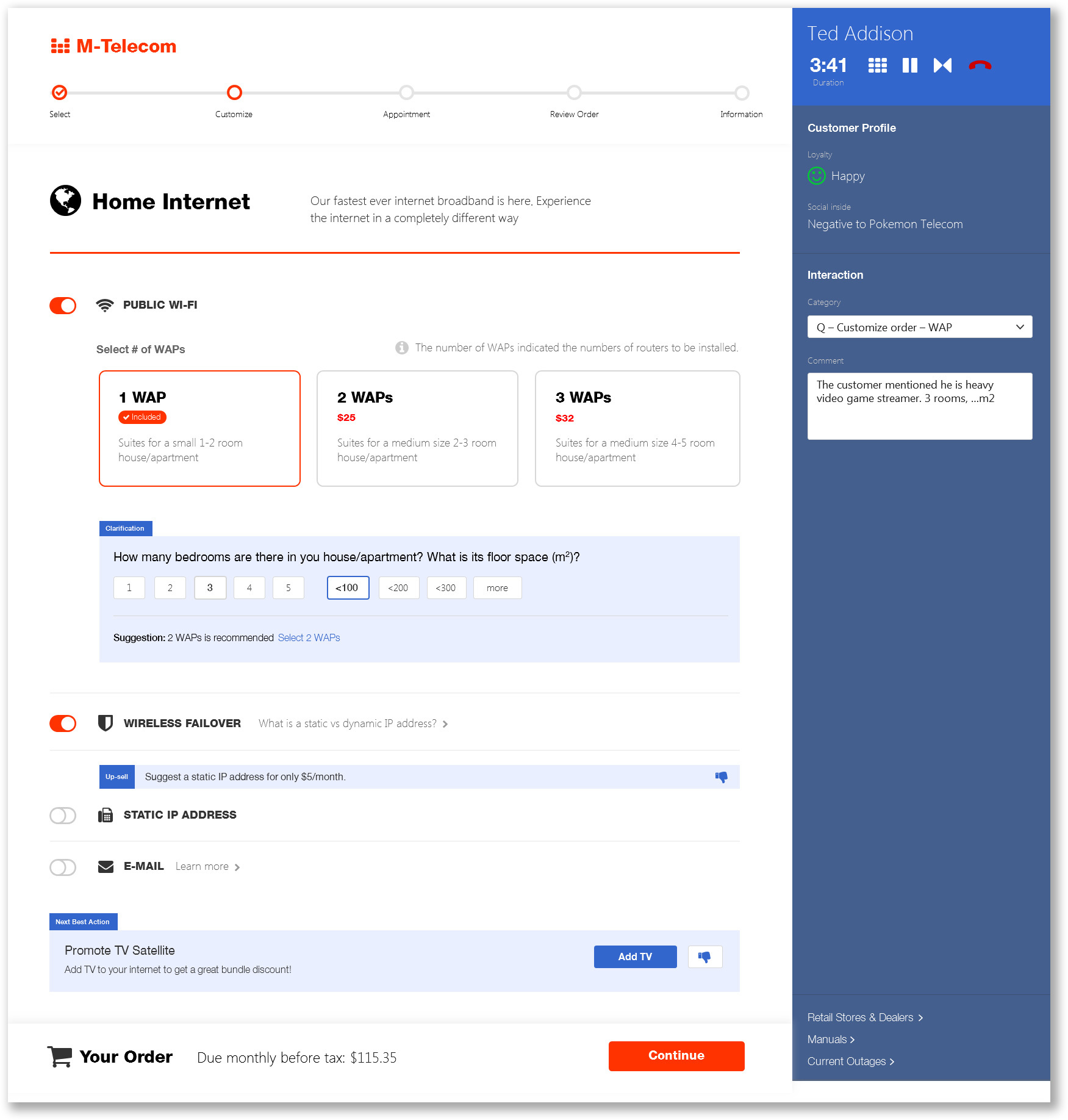
Order page telecom services for the operator.
The operator is available and the status of the buyer (including information from social networks), and auto-complete block Interaction, and dynamic upsell / cross-sell offers. However, the purchase screen-flow looks similar, and the operator goes through the whole process together with the buyer in real time.
The provider understands that such interfaces are a compromise and right now the speed of work of operators in stores and call centers will fall. After all, the operator - a user with a different experience and expectations - is forced to work in the buyer's interface. And that means more clicks, different navigation logic, less data on one screen and unusual accents.
However, in the long term, this approach will allow:
- develop self-service and reduce costs for a call center;
- simplify operator interfaces, reduce their qualifications and speed up training;
- use the full power of analytics to offer the customer what he wants to buy at the right moment.
Secret becomes clear
Now it is clear what is being hidden from the client in the operator's monitor: the latest approaches to service. Today, telecom operators know about customers enough to be able to sell them even what they themselves have not thought of. But this is not the “joining” of a doubtful product. This desire to study the consumer and offer exactly what will make him happy. Of course, the transformation of processes and tools will not bring immediate benefits. But the key to business success is high quality service. Therefore, these investments will pay off in the long term.
And although the requirements for CRM systems are known, and the systems themselves have long been implemented and used, telecom companies are beginning to understand that not only functionality is important. Against the background of the global spread of digital technologies, everyday user experience and expectations inevitably penetrate into the sphere of specialized software. Caring for customer experience advances product design. In addition, the convenience of the interface and the speed of the operator directly affect customer satisfaction and, ultimately, profit.
Customer expectations are rising, the definition of UX is changing before our eyes, the requirements for product quality are reaching a new level. And we at Netcracker realize that in such conditions our responsibility grows. Information technologies have reached a level of development when there are almost no barriers in terms of the implementation of functionality and integration with the business. But in order to adequately respond to the challenges of the industry, deliver and implement innovative solutions around the world, it is necessary to continue to focus on user experience. This is one of the key requirements in order to compete successfully in the market.
It would be interesting to learn about your projects in this area. Have you ever developed such systems? What did they look like? Write in the comments!
Source: https://habr.com/ru/post/318088/
All Articles